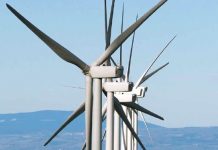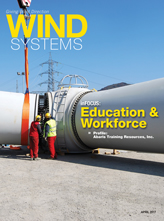Wind-energy jobs passed the 100,000 mark in 2016.
That statistic has been posted many times over in industry circles during the past several months — and for good reason.
Another oft repeated stat: The wind tech is the fastest growing job in the U.S.
Both those facts are more than just casual trivia to an industry that is growing faster than any models over the last decade have predicted.
That’s awesome news, and in this issue of Wind Systems, we look at what that means to wind education and the workforce that is born from it.
With all the great strides in wind happening around the country and the world, a strong workforce is vital to fill those needs in every area of wind.
In our inFocus section, I talked with Suzanne Tegen with the National Renewable Energy Laboratory about where the wind workforce is heading now and in the future.
She discusses in detail what kind of jobs are needed and why.
On the education front, Ecotech Institute’s Walter Christmas shares his insights on the five topics wind schools should be teaching.
In our Conversation, we chatted with Chris Pattison with the National Wind Institute. He reveals how NWI stays up-to-date with the latest wind information for his students as well as shares great news about his institution: It now offers the first wind Ph.D. program in the U.S.
But more wind-education programs and communication are needed in order to get that viable career in wind on young people’s radars. For example, we need more conscientious 20-somethings like Jack Wolfe, who has written a Perspective column about why he decided to study wind power and what he hopes to get out of it once he graduates and enters the workforce. It’s interesting and insightful and gives a look inside the mind of a student as he looks to the future of both the planet and himself.
If you’re wondering about the state of the wind workforce and the education programs that feed into it, then this issue is a must read. There’s a lot of information to absorb, and I bet you’ll pick up one or two things that you didn’t know before. I know I did.
Spring has sprung, and Earth Day is right around the corner. Renewable energy’s future is bright and only looks to get brighter. It’s one of the cheapest available options for producing electricity, and more and more governments, organizations, and businesses are taking advantage of that fact. We just have to make sure there’s a strong workforce to back that up.
Thanks for reading!
































